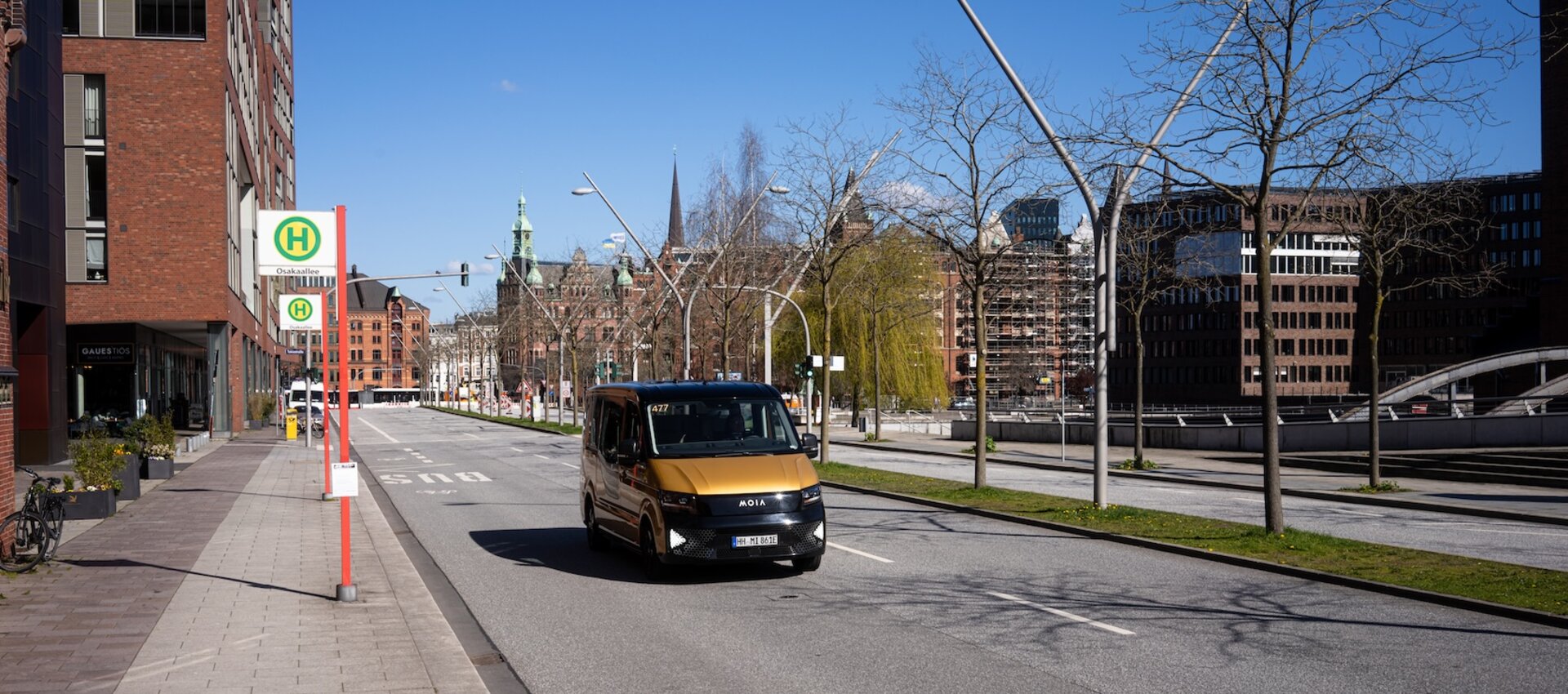Last year, 68 percent of all trips in Hamburg were made either by bus, train, bicycle or by foot. This is the result of a current, representative survey on the mobility behavior of more than 8,000 Hamburg residents, conducted by the Authority for Transport and Mobility Change. Compared to the survey from 2017, this represents an increase of four percentage points and is a top result for the modal split in Hamburg.
But what exactly is the modal split?
The modal split is the parameter that describes the percentage of different modes of transport used by people to get around. Typical modes include motorized private transport (MPT) such as cars or motorcycles, public transport (PT) such as buses, subways or streetcars, and non-motorized private transport, which includes bicycle and pedestrian traffic. In passenger transport, the ratio between private and public transport is referred to as the "classic" modal split. If one wants to describe the modal split in terms of environmentally and urbanly compatible transport concepts, private transport is also included.
MOIA is part of the public transport
system in Hamburg
In order to improve the modal split in favor of climate-friendly transportation and thus further advance the mobility revolution, cities and municipalities must not only promote public transportation, but also develop bicycle- and pedestrian-friendly infrastructures. In this context, bus and rail networks must be expanded and new lines respectively be introduced, and the accessibility and reliability of these services must be ensured. In addition, promoting ridepooling services is an important component to reduce traffic congestion in cities. Since this year, MOIA has been part of the public transport system in Hamburg, contributing to the mobility turnaround on the Elbe.
Survey shows: People are traveling less
The survey shows that bicycle traffic increased the most in Hamburg last year: The share of all trips here has risen from 15 percent since 2017 to currently 22 percent. Public transport increased by two percentage points to a total of 24 percent. In contrast, private motor vehicles dropped from 36 to 32 percent. In addition, fewer trips were made on foot - here the share dropped from 29 to 22 percent.
Overall, mobility in Hamburg has declined. The Corona pandemic and the related trend toward remote work may be one reason for this: According to the survey, the total number of completed trips per day decreased significantly - from 5.8 million in 2017 to 5.3 million in 2022. In terms of transport performance, i.e. person kilometers, there was also a decrease of 14 percent in the same period. Remarkably, in terms of cars alone, person-miles of traffic fell by 29 percent. If you want to learn more about the survey by the Authority for Transport and Mobility Change, take a look here: Research on mobility turnaround
What influence does ridepooling
have on travel behavior?
MOIA was not yet included as part of public transport in the survey by the Authority for Transport and Mobility Transition. However, in 2019 we conducted accompanying research to empirically investigate the influence of ridepooling on people's transportation behavior and for which routes our new mobility service is used. The result: area-wide ridepooling is an ideal supplement for public transport and represents a good alternative offer in areas and at times when public transport provides inadequate service. In addition and complementary to this, however, cities need transport services that people perceive as similarly attractive and flexible as their own car. People in Hamburg will become less dependent on private cars to meet their mobility needs if they occasionally use MOIA. However, the backbone of urban mobility is and remains classic public transport. For trips with high time pressure, cabs continue to be the mode of choice. The initial concerns that MOIA would cannibalize public transport and cabs in particular have not materialized. More about our accompanying research can be found here: accompanying research for MOIA.
Hamburg-Takt - MOIA is part of it
We are curious to see how the numbers develop over the next seven years, because in the climate plan called Hamburg-Takt, the Hamburg Senate has committed itself to achieving an 80 percent share of trips in the environmental network, consisting of public transport, cycling and walking, by 2030. Although bus, rail and bicycle traffic are currently experiencing a real renaissance, they alone cannot replace the traffic load of private vehicles. Therefore, additional, more flexible mobility services are needed to unleash the full potential of the environmental alliance. These include so-called "on-demand" transport services such as MOIA's on-demand ridepooling.
That is why we are already supporting the Hamburg Senate, as part of the public transport system, in achieving the Hamburg Takt. And with our offer of an integrated autonomous ridepooling system, we will increase our share in this. Together with Volkswagen Commercial Vehicles, we plan to launch the ID. Buzz AD on the streets of Hamburg for the first time. The first autonomous journeys with a closed group of users will then take place from 2024. The goal is to develop an integrated autonomous ridepooling system for international scaling by 2025.
